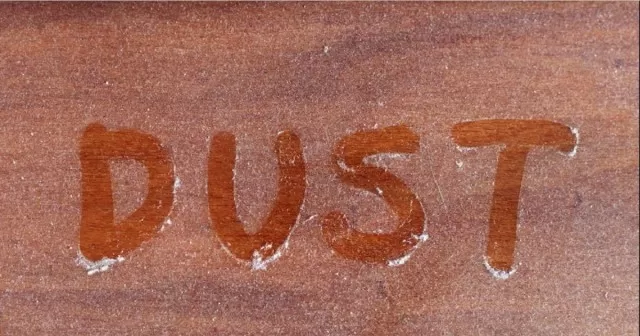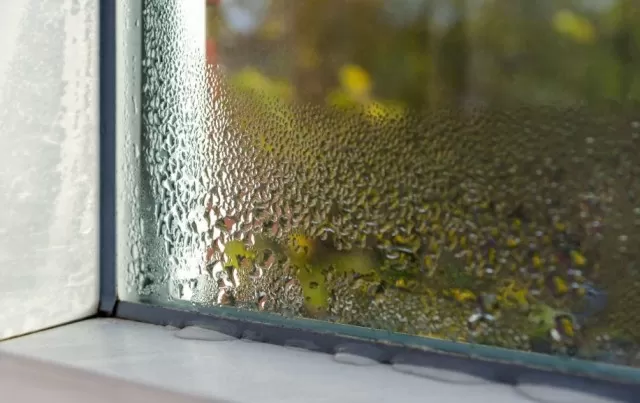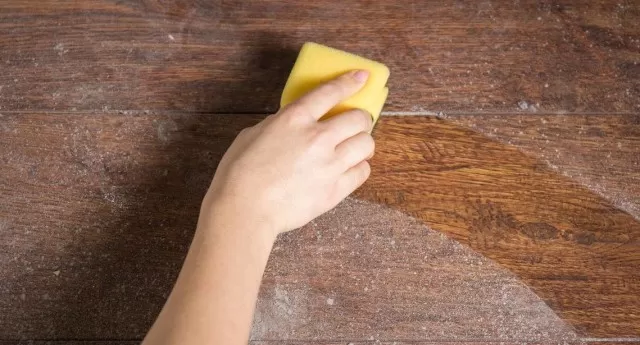Dust is a prevalent issue in households, and even with consistent cleaning, it can be challenging to keep at bay.

Excessive dust not only detracts from the aesthetics of a space but can also lead to allergies, asthma attacks, and other health concerns. Moreover, the composition of dust itself is quite unpleasant, comprising elements such as dead skin cells, pet dander, dirt, and fibers from clothing, among other substances.
However, the extent of dust accumulation in your home can vary based on several factors. These include the season, the number of occupants in your home, the presence of pets, and the frequency of cleaning and vacuuming.
Typical sources of dust

If you find yourself wondering why your house is constantly dusty, you’re not alone.
Despite regular cleaning, dust tends to reappear persistently. Here are some common factors contributing to dust accumulation:
Elevated Humidity:
High levels of humidity in indoor spaces create an ideal environment for dust mites and mold colonies to flourish.
Moreover, increased humidity causes dust particles to adhere to one another, making them more challenging to eliminate. To regulate humidity, consider using dehumidifiers or air conditioners to maintain optimal levels between 40% and 60%.
Using air conditioners instead of opening windows can also help prevent the entry of pollen.
Malfunctioning HVAC Systems:
An HVAC system plays a crucial role in combating indoor dust.
When dust enters your home, the system should draw in the particles through vents and filter them out before recirculating the air. However, a faulty HVAC system with worn-out filters or leaky ductwork can leave your home dustier than usual.
It’s essential to maintain your HVAC system properly and ensure it is functioning optimally. Replace air filters every three months or according to the manufacturer’s recommendations.

Vacuuming Practices:
While many consider vacuuming an effective way to eliminate dust, some vacuum cleaners can release excess dust and contaminants into the air, leaving your home feeling dustier after cleaning.
To mitigate this issue, consider investing in vacuums equipped with high-efficiency particulate air (HEPA) filtration systems. Alternatively, wet vacuums can be used, as they trap dust in a water container, preventing it from becoming airborne.
External Influences:
If you reside near a busy street with heavy traffic or near factories or mines, you are likely to experience more dust compared to homes unaffected by these factors.
Open doors and windows can also allow dust to enter your home. A viable solution is to seal windows, doors, and any other gaps that could serve as entry points for dust.
Dust can also accumulate in fabrics and cluttered areas. Regularly washing carpets, textiles, stuffed animals, garages, and attics can significantly help in reducing dust levels.
Minimize dust in your home

Mary Gagliardi, an in-house scientist, and cleaning expert at Clorox suggests implementing a few straightforward adjustments and maintaining a consistent cleaning routine.
Here are some paraphrased tips:
Enforce house rules:
Remove shoes before entering the house.
Avoid placing outside clothes on the bed. Regularly wash pets, clothes, coats, and stuffed animals.
Adopt an effective cleaning method:
Begin cleaning each room from the top, gradually working your way down.
This ensures that any dust that falls during the cleaning process will be addressed by the time you reach the floor level. Pay attention to often overlooked areas, such as the narrow top of painted picture rails, door trim, doors, tops of painted kitchen cabinets, and baseboards.
These surfaces tend to accumulate dust and grime.
Regularly vacuum upholstery and curtains:
Dust can hide in patterns and fabrics on sofas, chairs, Throw Pillows, and window treatments.
Utilize a vacuum with a HEPA filter to capture allergens effectively. When emptying the vacuum canister or replacing the filter bag, do so outdoors to prevent reintroducing dust into the areas you just cleaned.
By following these guidelines, you can effectively reduce dust in your home and maintain a cleaner environment.
*The information is for reference only.